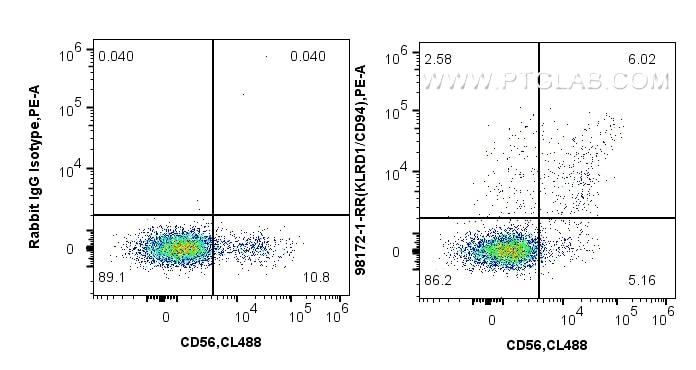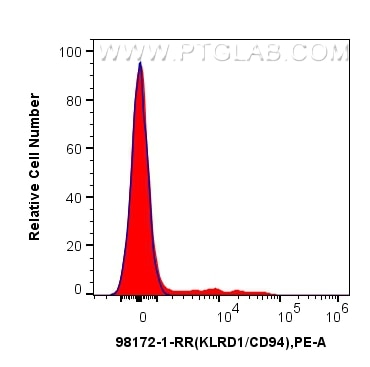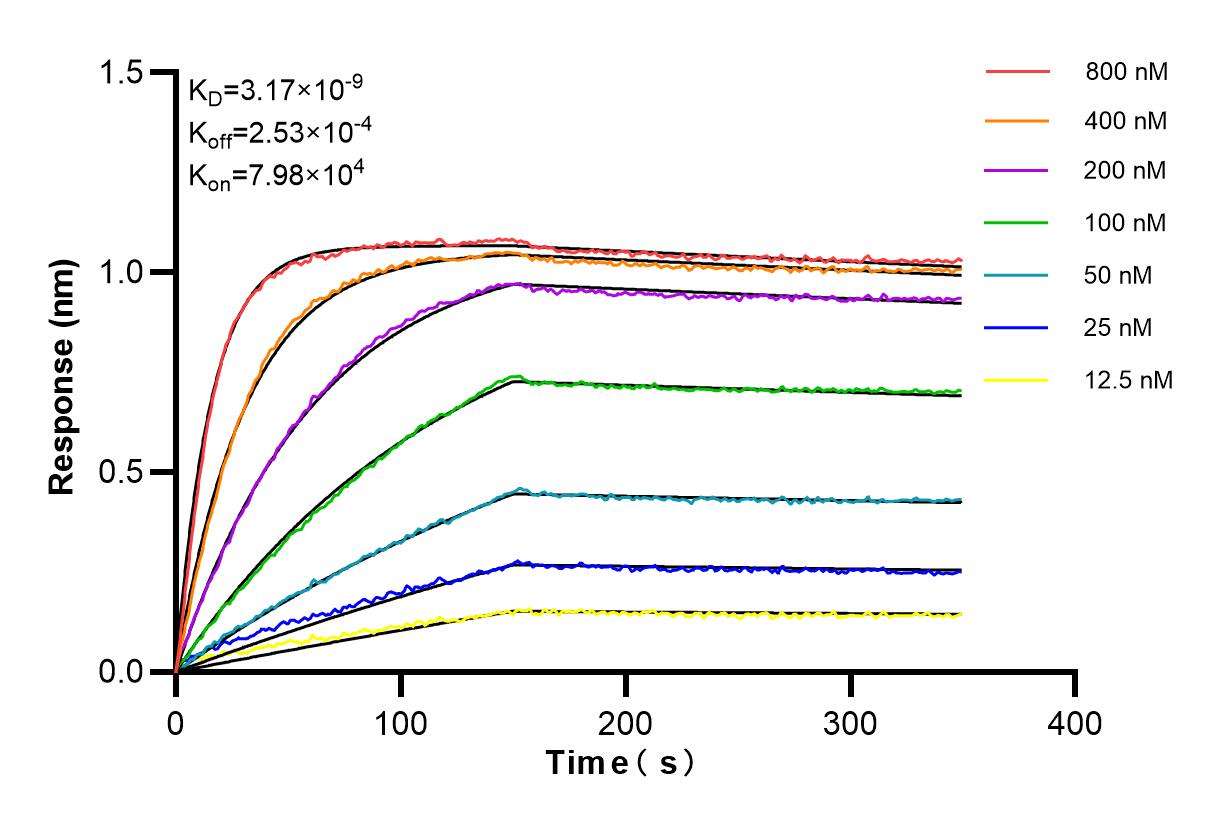Anticorps Recombinant de lapin anti-CD94
CD94 Recombinant Antibody for FC
Hôte / Isotype
Lapin / IgG
Réactivité testée
Humain
Applications
FC
Conjugaison
Non conjugué
CloneNo.
241704E11
N° de cat : 98172-1-RR
Synonymes
Galerie de données de validation
Applications testées
| Résultats positifs en cytométrie | CMSP humaines, |
Dilution recommandée
| Application | Dilution |
|---|---|
| This reagent has been tested for flow cytometric analysis. It is recommended that this reagent should be titrated in each testing system to obtain optimal results. | |
| Sample-dependent, check data in validation data gallery | |
Informations sur le produit
98172-1-RR cible CD94 dans les applications de FC et montre une réactivité avec des échantillons Humain
| Réactivité | Humain |
| Hôte / Isotype | Lapin / IgG |
| Clonalité | Recombinant |
| Type | Anticorps |
| Immunogène | Protéine recombinante |
| Nom complet | killer cell lectin-like receptor subfamily D, member 1 |
| Masse moléculaire calculée | 179 aa, 20 kDa |
| Numéro d’acquisition GenBank | BC028009 |
| Symbole du gène | CD94 |
| Identification du gène (NCBI) | 3824 |
| Conjugaison | Non conjugué |
| Forme | Liquide |
| Méthode de purification | Protein A purfication |
| Tampon de stockage | PBS with 0.09% sodium azide |
| Conditions de stockage | Store at 2 - 8°C. Stable for one year after shipment. |
Informations générales
CD94, also known as the killer cell lectin-like receptor (KLR) family member, is a type II integral membrane protein related to the C-type lectin superfamily. It is specifically expressed on natural killer (NK) cells and a subset of T cells, and plays a crucial role in stimulating NK cell cytolysis and the release of tumor necrosis factor. CD94 can form heterodimers with different NKG2 proteins (e.g., NKG2A, NKG2C, NKG2E, or NKG2F) to balance the function of NK cells and CD8+ T cells.
Protocole
| Product Specific Protocols | |
|---|---|
| FC protocol for CD94 antibody 98172-1-RR | Download protocol |
| Standard Protocols | |
|---|---|
| Click here to view our Standard Protocols |





